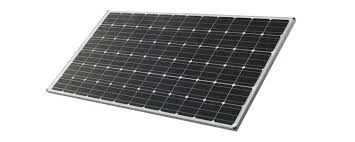solar panels size for home
Understanding the Appropriate Size of Solar Panels for Your Home
As more homeowners become environmentally conscious and seek ways to reduce their energy bills, solar panels have emerged as a popular solution. However, one of the most common questions prospective buyers have is about the size of the solar panels required for their homes. Understanding solar panel sizing is essential to optimize energy production and ensure a sufficient return on investment.
Factors Affecting Solar Panel Size
When considering the size of solar panels, several critical factors play a significant role
1. Energy Consumption The first step in determining the appropriate size of solar panels for your home is evaluating your current energy usage. Look at your electricity bills over the past year to find an average monthly kilowatt-hour (kWh) usage. This figure is crucial, as it will directly influence the number of solar panels needed to meet your energy demands.
2. Solar Panel Output Not all solar panels produce the same amount of energy, which means their size and efficiency can impact how many panels you'll need. Most residential solar panels range from 250 to 400 watts of power. Higher efficiency panels can generate more energy per square foot, meaning fewer panels may be needed for the same energy output.
3. Roof Size and Orientation The dimensions and orientation of your roof significantly influence how many solar panels can be installed. Ideally, solar panels should be placed on a south-facing roof that receives ample sunlight throughout the day. Additionally, any physical obstructions like chimneys, trees, or vents can reduce the available installation space and, consequently, the number of panels you can use.
4. Local Climate The amount of sunlight your location receives directly impacts how efficiently solar panels perform. In sunnier regions, fewer panels may be needed to generate the same energy output as in less sunny areas. Evaluating the average solar insolation (the amount of solar energy received in a given area) can help determine the necessary size of your solar panel system.
5. System Losses It's essential to account for energy losses within the solar panel system, often about 10-20%. These losses can occur due to inverter inefficiencies, shading, and other factors. Therefore, when calculating how many panels you might need, consider increasing your original estimate to ensure you meet your energy requirements.
solar panels size for home

Calculating the Required Solar Panel Size
To provide a practical example, let’s say your average monthly energy consumption is 900 kWh. Assuming your chosen solar panels produce 300 watts each, the first step is to calculate how much energy one panel would produce in a day.
In an area with an average of 5 sunlight hours per day, one 300-watt panel would generate about \[ 300 \text{ watts} \times 5 \text{ hours} = 1500 \text{ watt-hours} \text{ or } 1.5 \text{ kWh/day} \]
Next, to find out how many panels you need for 900 kWh per month (approximately 30 days) \[ \frac{900 \text{ kWh}}{30 \text{ days}} = 30 \text{ kWh/day} \]
Finally, divide this daily requirement by the output of one panel \[ \frac{30 \text{ kWh/day}}{1.5 \text{ kWh/panel}} = 20 \text{ panels} \]
Thus, for an average energy consumption of 900 kWh per month, you would need about 20 solar panels, assuming ideal conditions.
Conclusion
Determining the size of solar panels for your home involves a careful assessment of your energy usage, the efficiency of the panels, and environmental conditions. By combining these factors, homeowners can make informed decisions to effectively meet their energy needs and maximize savings. Before making any investments, consulting with a solar energy professional can also provide tailored insights and recommendations to create an optimal solar solution for your specific circumstances. With the right size panels installed, homeowners can enjoy not only lower electricity bills but also contribute positively to the environment.
-
Unlocking Energy Freedom with the Off Grid Solar InverterNewsJun.06,2025
-
Unlock More Solar Power with a High-Efficiency Bifacial Solar PanelNewsJun.06,2025
-
Power Your Future with High-Efficiency Monocrystalline Solar PanelsNewsJun.06,2025
-
Next-Gen Solar Power Starts with Micro Solar InvertersNewsJun.06,2025
-
Harnessing Peak Efficiency with the On Grid Solar InverterNewsJun.06,2025
-
Discover Unmatched Efficiency with the Latest String Solar InverterNewsJun.06,2025







